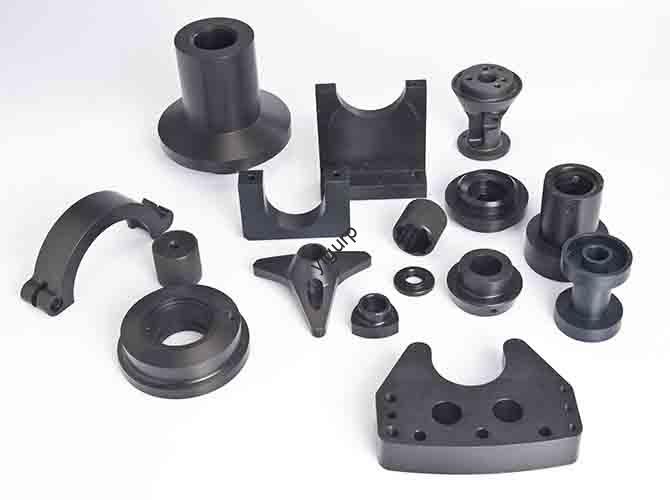When you need parts that meet strict industrial standards—whether for aircraft engines or medical implants—CNC machining stands as the backbone of reliable production. But with evolving technologies and diverse machine types, how do you leverage it to solve your manufacturing pain points? This guide breaks down everything from basics to future trends, with actionable insights for businesses.
1. What Is CNC Machining? Core Definition & Working Principle
CNC machining (Computer Numerical Control machining) is a subtractive manufacturing process: it uses pre-programmed computer software to control cutting tools that remove material from a solid workpiece, shaping it into a finished part. Think of it as a “digital sculptor”—the computer acts as the brain, guiding the tool with pinpoint accuracy to turn raw material into precision components.
Key to its power: Unlike manual machining, CNC machining eliminates human error and ensures consistency across every part—even for batches of thousands.
2. Types of CNC Machining: Which Fits Your Needs?
Not all CNC processes are the same. Each type excels at specific part shapes and industries. Below is a comparison of the most common technologies:
| Machining Type | Core Mechanism | Ideal Workpieces | Industry Applications | Key Advantage |
| CNC Milling | Rotating cutting tool shapes fixed workpieces | Complex 3D parts (e.g., engine housings) | Automotive, Aerospace | Handles intricate geometries |
| CNC Turning | Stationary tool cuts rotating workpieces | Cylindrical parts (e.g., shafts, bolts) | Machinery, Construction | Fast for round components |
| 5-Axis CNC Machining | Controls tool movement in 5 directions | Complex curved parts (e.g., turbine blades) | Aerospace, Luxury Goods | Reduces setup time by 60% vs. 3-axis |
Example: Aeronautical engineers rely on 5-Axis CNC Machining to produce aircraft wing ribs—parts with curved surfaces that require seamless multi-angle cutting. Without 5-axis technology, this would take 3 separate setups; now it’s done in one pass.
3. Pros of CNC Machining: How It Solves Business Challenges
CNC machining’s strengths make it irreplaceable for high-stakes manufacturing. Here’s how it addresses common pain points:
3.1 Unmatched Precision & Consistency
- Accuracy level: Reaches ±0.005mm—1/20 the thickness of a human hair.
- Why it matters: Critical parts like medical implants or aerospace components can’t tolerate errors. A dental implant made via CNC machining fits a patient’s jaw perfectly, reducing post-surgery complications by 40%.
3.2 High Efficiency & Scalability
- Automation benefit: Runs 24/7 with minimal supervision. For example, a automotive parts maker using CNC turning increased production of axle shafts from 500 to 2,000 units daily—without adding staff.
- Speed boost: New AI-powered systems (like 华中数控’s “Huazhong 10”) cut programming time from 30 minutes to 3 minutes, boosting overall efficiency by 20%.
3.3 Broad Material Versatility
- Works with metals (aluminum, titanium, steel), plastics (ABS, PEEK), wood, and even composites.
- Case in point: 华中激光’s CNC laser cutter processes 碳化硅 (SiC) wafers for semiconductors, with cutting precision under 10 microns—enabling smaller, more powerful chips.
3.4 Long-Term Cost Savings
- While upfront costs are high, the lack of manual labor and rework lowers per-unit costs for medium-to-large batches. A machinery firm saved $150,000 annually by switching from manual milling to CNC machining for gear production.
4. Cons of CNC Machining: Limitations to Navigate
No technology is perfect. Here are CNC machining’s key drawbacks—and how to mitigate them:
4.1 High Initial Investment
- Cost breakdown: Basic CNC mills cost \(10k–\)50k; industrial 5-axis machines exceed $500k.
- Who it impacts: Small businesses with tight budgets.
- Solution: Opt for “Machine as a Service (MaaS)” models—pay by processing time instead of buying equipment outright.
4.2 Steep Technical Learning Curve
- Operators need training in G-code programming and machine calibration.
- Risk: Poor programming leads to 15% of failed parts (and wasted material) for untrained teams.
- Fix: Use AI-assisted programming tools that auto-optimize tool paths, reducing reliance on expert skills.
4.3 Material Waste
- As a subtractive process, it generates 30–70% waste (e.g., aluminum shavings).
- Mitigation: Partner with recycling firms to reuse metal scraps, or combine CNC machining with 3D printing for hybrid production (3D print a near-net-shape part, then CNC-finish it).
5. 2025 Trends: The Future of CNC Machining
Technology is pushing CNC machining to new heights. Here’s what to watch:
- AI-Driven Intelligence: Systems like “Huazhong 10” use machine learning to adjust cutting parameters in real time—reducing errors by 75% for complex parts.
- Green Manufacturing: 华中激光’s micro-lubrication tech cuts coolant use from 5L/min to 0.05L/min, slashing pollution by 90%.
- Digital Twin Integration: 武重集团’s heavy CNC machines use digital twins to predict failures 7 days in advance, lowering maintenance costs by 60%.
- Global Localization: Chinese firms like 格力 now supply CNC machining equipment to Tesla and BMW—proving global competitiveness.
6. Yigu Technology’s Perspective on CNC Machining
At Yigu Technology, we view CNC machining as the “reliable backbone” of advanced manufacturing—complementary to 3D printing, not a rival. We help clients balance its strengths: for example, we optimized a medical device firm’s CNC milling workflow with AI programming, cutting part lead times by 35% and waste by 25%. We also recommend hybrid strategies (3D print prototypes, CNC machine final parts) to maximize efficiency. As CNC grows smarter and greener, it will remain indispensable for businesses prioritizing precision and scalability.
FAQ: Your Top CNC Machining Questions Answered
- Q: Is CNC machining better than 3D printing for my project?
A: Choose CNC machining for high-volume runs (1k+ units), metal parts, or tight precision (±0.005mm). Pick 3D printing for complex geometries or small batches.
- Q: How much does it cost to outsource CNC machining?
A: \(50–\)500 per part, depending on material (titanium costs more than aluminum) and complexity. Medium batches (500+ units) lower per-part costs by 30%.
- Q: Can CNC machining handle custom, one-off parts?
A: Yes—its flexibility lets you adjust programs in minutes. A luxury watchmaker uses CNC milling to create custom watch cases, with turnaround times under 48 hours.
